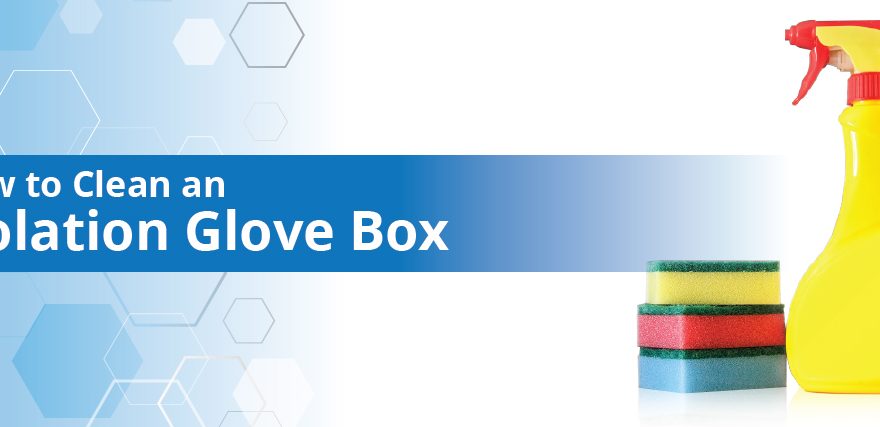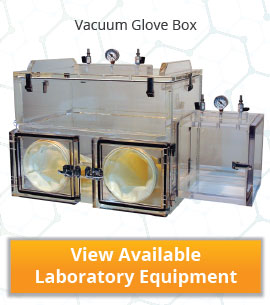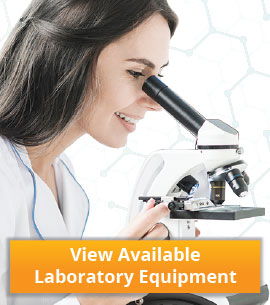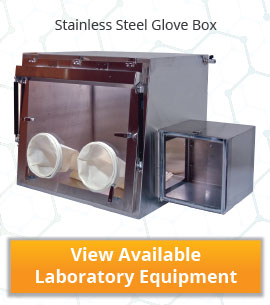How to Cleaning an Isolation Glove Box
Cleaning your isolator/glovebox periodically reduces the percent of cross-contamination after each use. In essence, an isolation glove box is a scaled-down version of a cleanroom; similar cleanroom cleaning procedures can be used. The cleaning steps below can be used across a variety of glove box system. But, the agents used to clean the enclosure will differ depending on the construction material used for your glove box.
Before starting, review our Cleaning equipment list and Cleaning tips.
Cleaning Equipment
- Deionized water is recommended
- Mild nonabrasive detergent*
- Biohazard trash bags
- Isolator cleaning tool
- Lint-free or low particulate release cleaning cloth
Cleaning Tips
- Gather all cleaning supplies before starting
- Non-abrasive cleaning cloth such as kimwipes
- Cleaning starts at the glove box ceiling and end with the floor
- Work your way to the front of the unit
- If your glove box is equipped with HEPA or ULPA filters, be careful not to damage the filters
- The same cleaning wipe can be used up to four consecutive passes. Inspect the wipe after each pass, if there is visible contamination it’s time to use a different wipe.
Caution! Do not use alcohol or other ammonia-based chemicals to clean an acrylic glove box.
Isolation Glove Box Cleaning Steps
Inside Enclosure
Just as performing a test inside the glove box chamber, cleaning will be done by using the fixed glove assembly. This will prevent contaminate from drifting into the laboratory.
Start by placing all cleaning supplies inside the main enclosure and closing the door.
- Cleaning will begin at the top/ceiling of the glove box
- Using non-abrasive cleaning cloth, wipe left to right with overlapping strokes
- Fold the wiper into quarters, using a different quarter for each stroke. This ensures no particulate is returned
- Next move onto cleaning the side walls of your glove box. The back wall left and right wall are next and finish with the front wall
- An isolation cleaning tool can be used to clean hard to reach areas
- If you are using a cleaning tool, make sure to change the wipe before starting on a new side
- Using the same motion, left to right overlapping strokes
- The floor will be the last surface to clean. Using the same left to right motion
- Inspect the last wiper, there should be no visible residue
If a cleaning agent has been used for the steps above, a wiper or mop pre-treated serialized with deionized IPA can be used to rinse the cleaning agent.
Outside Enclosure
If the outside surface is dirty, lightly swab a damp cloth over the unit. Avoid forceful rubbing as this can cause scratches to acrylic and stainless steel surfaces. To dry the acrylic surface use a clean, dry cloth and gently blot the surface.
Following this glove box cleaning procedure will help reduce cross-contamination after each use. Always consult with a laboratory manager before using any type of cleaning agent and wear laboratory safety gear during cleaning.
Visit our glove box page to see available glove boxes, specifications, and price.




